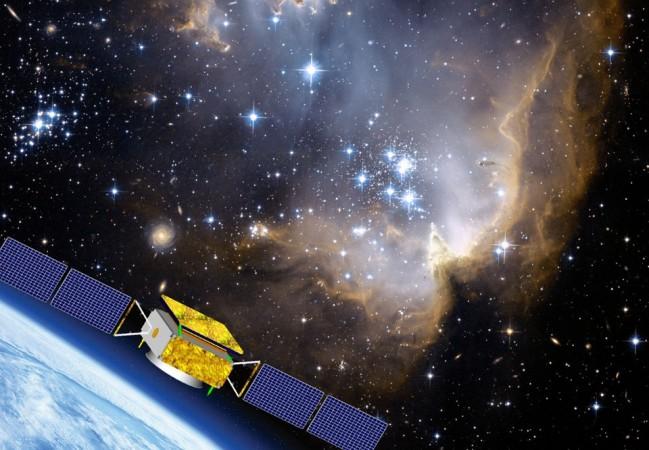
Dark matter, a mysterious phenomenon believed to comprise a quarter of the universe, is still missing. While a never-ending search for this strange substance has led many to question its existence, a new discovery by a team of scientists has apparently provided the missing link in the search for one of the greatest mysteries of science.
According to the scientists, they have detected unexpected and mysterious signals in the measurement of high-energy cosmic rays by China's Dark Matter Particle Explorer (DAMPE) satellite, also known as "Wukong" or Monkey King. The latest findings are now expected to bring astronomers one step closer to proving the existence of dark matter which is believed to be made up of unknown subatomic material.
Although dark matter is invisible to telescopes, its existence and properties are inferred from its gravitational pull on other objects in the universe. The Chinese satellite, which is equipped with instruments capable of observing the direction, energy and electric charge of high-energy particles in space, has detected 1.5 million cosmic ray electrons and protons ever since its launch two years ago.
In a study, published in the journal Nature on Wednesday, the scientists said that their measurement of the data provided by DAMPE helped them find curiously low-energy rays that can cast light on "the annihilation or decay of particle dark matter". Launched in December 2015, DAMPE is now collecting more data from space to help researchers better understand what it could be.

"The DAMPE satellite is starting to directly measure the properties of cosmic rays at energies that were inaccessible to previous measurements, so we are entering unknown territory -- we do not know what it will find," Karl Ziemelis, Nature's chief physical sciences editor, told Xinhua. "But whatever it finds will be new and contribute to our understanding of high-energy processes in our galaxy, regardless of whether they involve dark-matter particle annihilation."
Scientists believe that normal matter, such as galaxies, stars, trees, rocks and atoms, accounts for only about five percent of the universe while the rest dark matter and dark energy. However, finding it has proved to be a great challenge for researchers as it doesn't emit or reflect enough electromagnetic radiation.
With DAMPE, which is claimed to be superior to its US counterpart AMS-02 (Alpha Magnetic Spectrometer) currently installed on the International Space Station, scientists are hopeful that the newly detected "unseen phenomena can bring breakthroughs" in the search for dark matter.
"If the signal can be confirmed with the accumulation of data, it would be of great significance," Bi Xiaojun, a particle physicist at the Institute of High Energy Physics of the Chinese Academy of Sciences, said in a statement. "If we use dark matter to explain it, dark matter would be different from what we thought before. It conforms to the popular dark matter model of weakly interacting massive particles (WIMP), but has some special features."










